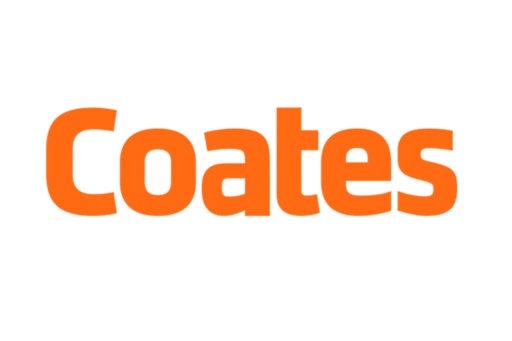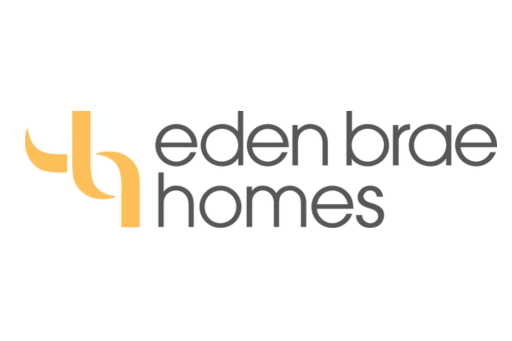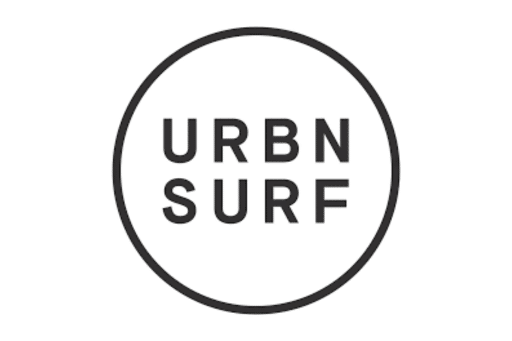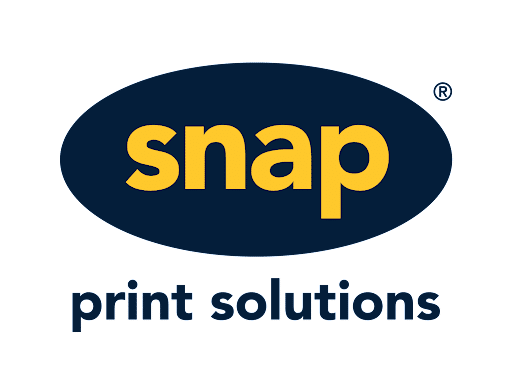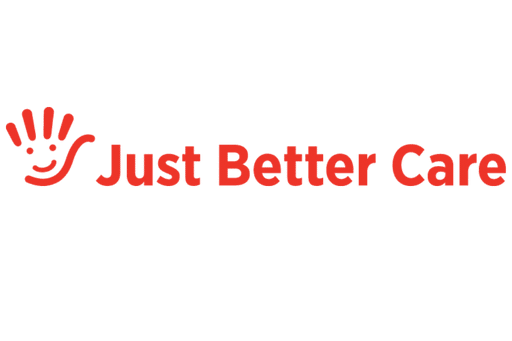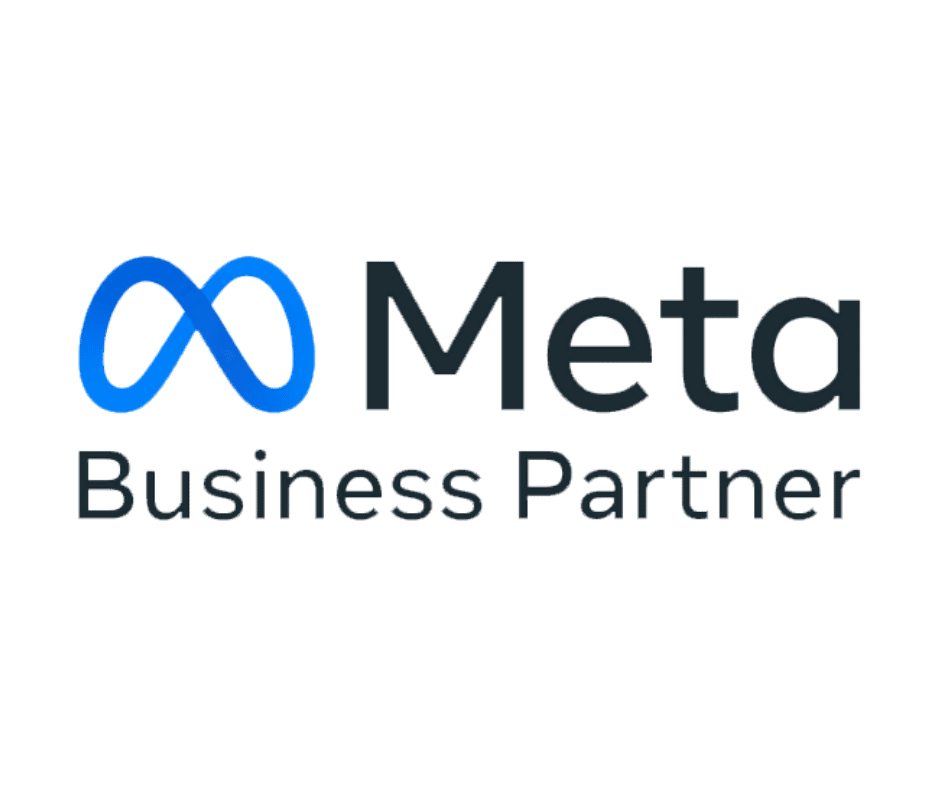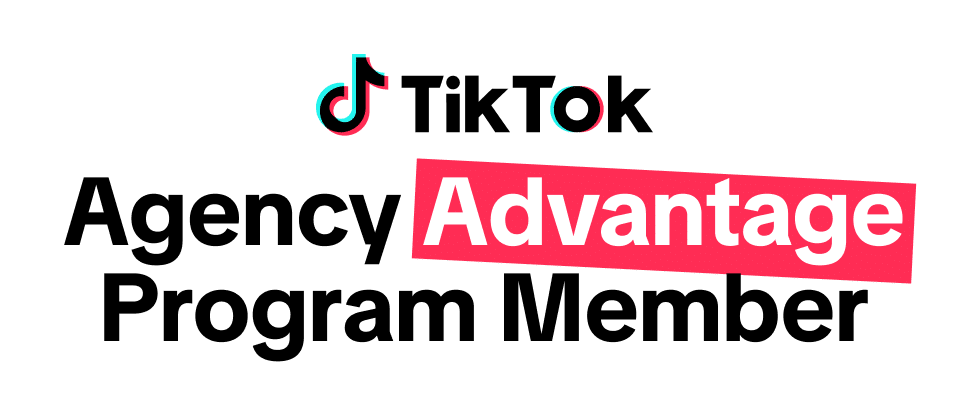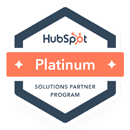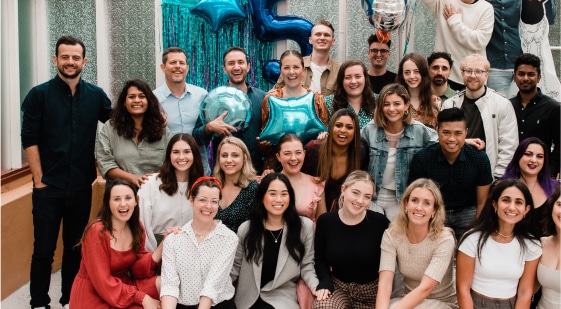How to Nurture Existing Customers
Episode Description:
It’s 5x more cost-effective to win business from an existing customer than having to land a new one. Kieran Krohn, Senior Sales Manager at HubSpot, shares how businesses can better engage existing customers.
Key Takeaways:
- Kieran’s journey and experience working at Hubspot.
- The importance of customer retention and tapping into revenue from existing customers.
- The value in segmenting your database by buying habits - previous purchases, when they last purchased etc.
- Marketing is all about context; delivering the right message to the right person at the right time.
- Building revenue operations as a means to help sales and marketing work together effectively.
- How to build brand loyalty through referral programs.
Featuring:

Kieran Krohn
About the Guest:
Kieran Krohn is the Senior Sales Manager at HubSpot, where he has worked for over 7 years. Previously, he was the Principal Channel Partner Manager and Senior Partner Acquisition. With an impressive background in both sales and marketing, Kieran is a member of both the Founder's Club and the President's Club. You can follow him on LinkedIn.
Podcast Summary: Nurturing Existing Customers
Kieran Krohn, Senior Sales Manager at Hubspot with experience in both the sales and marketing spaces, discusses the value of client retention and marketing to your existing customer base.
There is a strong emphasis as a marketer on customer acquisition - how can you reach more customers? How can you bring in new business? How do you generate a solid pipeline through prospects?
What is often missed, is that there is a big opportunity to market to existing customers to generate revenue - particularly for customers or clients who have bought from you for a while. It’s not only much easier to have a conversation with an existing customer than trying to reach out to someone new, statistically speaking, it’s 5x more cost-effective to win business from an existing customer than to bring on a new one.
When you consider the economics of it - marketing to your existing customers just makes sense!
It’s more profitable to retain an existing client/customer than bring in new business
Regardless of your business model, the onboarding phase is generally expensive. It’s even more difficult if you’re a business where humans are closing off a deal; with long customer buying cycles for high-value purchases.
Proposing an increasing scope to an existing client is typically going to have a better win rate than reaching out to people who haven’t transacted with you before. There’s an existing relationship built on trust and experience. You’re not starting from scratch.
How can marketing help drive sales from existing clients/customers?
The accountability to sell to existing customers doesn’t always sit with marketing - but in a lot of cases, it does.
One core way of improving your upsell numbers is by having the right systems in place to segment your database. You should have a CRM/email automation software set up, and the database on it should be clean, accurate, and up to date.
Segmenting your audience based on the products or services they’ve purchased, the date of their last purchase, or even the overall value they bring to your business can help you personalise and target your marketing efforts towards them.
Ultimately, marketing is about context; delivering the right message to the right person at the right time. If you have the data to help you, you’re able to better deliver on those three core things.
Do you know your business’s churn rate?
Your churn rate should be a core metric that your business measures against - especially if you want to improve this number and measure performance against it.
Client churn can be impacted by so many factors. For example, if the sales team is onboarding high quality, good fit customers, or if the leads coming in are fairly average. Likewise, client services teams play a huge role in the delivery of your product or service and whether your customers are having a positive experience. If your clients are leaving you - do you know why? Can you pinpoint what need wasn’t being met, and if it’s from the client's perspective, or that of the business itself?
In short, if you’re not already, you need to be measuring your churn rate, and secondly, someone needs to be accountable for it. Then, you can bring in various stakeholders within the business to improve this number and the overall experience of your customers.
The rise of revenue operations
One of the biggest challenges within most businesses is the misalignment with different teams, whether that be between sales and marketing, or similarly through service and delivery teams.
Revenue operations, or rev-ops, are one of the fastest-growing roles in the business space. These roles sit on top of various teams to ensure alignment and accountability. It provides multiple teams with a common objective - mainly growth and revenue - and limits working in silos.
Key factors that contribute to customer retention
1. Data and segmentation
Whether you have 100 or 100,000 customers - you need to know who they are. Do you understand their purchase history, and previous behaviours, and have access to previous conversations with your brand, to deliver a more contextual message to them? As the bigger your customer/client base grows, the more automated these conversations and interactions are going to be. But as customers start engaging with your marketing comms, you can then drive this information back to your sales and account teams.
2. How happy are your customers?
Have you implemented any systems to track the sentiment of your customers, whether through NPS, customer satisfaction surveys, or having a 1-1 conversation through your account management team? Similarly, do you have a process and the ability to record that feedback to then action it?
Instead of waiting for your customers to put their hand up and say something is wrong, how can you be proactive, and then off the back of that, improve your services from the feedback given?
For example, when clients sign on, they generally have a goal or an objective in mind that they are trying to achieve. There is an outcome that should be tied to some sort of metric for that business. If you’re identifying and agreeing on that impact, then when your client undergoes the onboarding and service delivery, there should be an ability to measure that impact over time. This is a great way to understand satisfaction without the customer even telling you - because you’ve achieved the outcome they came to you for in the first place!
3. Referral and loyalty programs
In terms of loyalty, there are financial incentives you can offer customers, particularly from a referral perspective. This could include offering a discount on a renewal, or a financial reward if they were to refer other customers to your business.
Another tactic many businesses have started implementing is gamifying loyalty in terms of status and points; for example, if you reach 1000 points, you might get a $10 voucher for your next purchase. There are tiering statuses as well, where the more you purchase, the greater your rewards will be. Consider Qantas Frequent Fliers, Everyday Rewards Cards, and Starbucks’ coffee punch cards.
On the other hand, if you’ve got really happy customers and they’re delighted with their service/products, they really shouldn’t need to be incentivised by you.
How can you move inactive customers?
You should have a solid off-boarding process for clients who no longer want to work with you.
Do you have a formal survey or response system where you know exactly why they left? This can not only improve how you serve other clients but can provide an opportunity to reach out to them again in the future. Especially since not all clients leave because of a bad experience - it could be a change of circumstance, a switch of roles, not enough budget, or that particular product/service is no longer useful. Having a plan to reach out to these past clients/customers in 6 months to a year, and opening back up the conversation where they could be in a position to work with you again is a fantastic way to generate revenue from a warm contact.
Need help setting up effective email marketing campaigns, or want a second opinion on your digital strategy?
Get in touch with the experts at Rocket Agency.
Transcript
James Lawrence: Today I'm joined by Kieran Krohn. Kieran, great to have you on the pod.
Kieran Krohn: James, it's a pleasure to be here. Thanks for the invite.
James Lawrence: We've talked about it for a while and we've finally managed to squeeze some time into your busy calendar. So Kieran is currently senior sales manager at HubSpot. He's been at HubSpot for over seven years now, previously worked as principal channel partner manager as well as senior partner acquisition roles at HubSpot. Today, we're going to be digging deep into customer retention. Why? That is such an important topic and theme for listeners to the pod. I think it'd just be good to, before we jump into it, hear a little bit of your backstory in terms of HubSpot, it's been quite a journey. I think we've probably crossed paths, I don't know, 4 or 5 years ago now. And you're a bit of a rock star. You're in the Presidents Club, the chairman's club. What's the club called?
Kieran Krohn: Oh, there's a few. We've got Presidents Club, we've got Founders Club. All the clubs…
James Lawrence: Put you in the top echelon, I guess, of performers at HubSpot over the last couple of years. So you'll be modest and won't admit that. But on your LinkedIn, I'm always seeing that you're being flown somewhere in the world by HubSpot based on smashing it. So yeah, it'd be good to hear about your journey through the organisation.
Kieran Krohn: So the funny thing was, when I started interviewing at HubSpot, I had no idea that I was going to be moving into the partner space. So my history prior to HubSpot was in direct sales, both kind of inside and outside sales. I kind of got thrown into it after I accepted the job. Actually turned out to be probably one of the best surprises in my life. I didn't know anything about channel sales, but fast forward, what is it like seven years later after working in the channel for about five and a half years? It was just a massive opportunity to really get to learn a lot about businesses, to understand go to markets, to help partners. Obviously it was great working with Rocket and we did a lot of work together. I kind of started off in the acquisition space. HubSpot did have the roll combined together, so we were working on identifying good partners, bringing them on to the partner program, onboarding them, enabling them, and then working with them to help them to bring customers on to HubSpot. They then split that role into two separate roles, because it was effectively an acquisition and more of a farming role. Did that for a while and then went back to being a channel account manager, just working purely with partners. I've kind of made the leap into direct sales leadership about a year and a half ago. Yeah.
James Lawrence: And HubSpot itself has grown massively in Sydney or in Australia since that time when you started?
Kieran Krohn: Yeah, definitely. I think I was employee number 22 in Australia when I started. And I think now we're probably up to about 100-150ish.
James Lawrence: Yeah huge growth. Good to get you on to the pod on this topic, because you kind of straddle a whole bunch of different areas. I think from the perspective of working in sales and this topic touches sales, this topic touches marketing. You've also dealt with marketers through so much of your time at HubSpot. HubSpot itself is a platform that helps businesses solve this problem or get better working towards this problem. And HubSpot itself is almost a case study in how to do this stuff well. Just felt there was such a convergence of so many different factors coming together that it just made sense. First of all, the why? Why is customer retention important? I think it's probably not as sexy a topic as as it probably should be.
Kieran Krohn: Yeah, you're right about that. I think the thing that always fascinates me is when I speak to marketers and businesses and just all the content you kind of see coming out through LinkedIn, by and large, a lot of it is around customer acquisition, right? How do we bring more customers in? How do we bring in new business? How do we generate pipeline from prospects? I think the big opportunity for marketers is how we tap into revenue from existing customers, particularly like businesses that have been with you for a while. Because retention rates are high, there's high service or product adoption generally. It's going to be much, much easier to have a conversation with one of those customers than it is to bring on a new customer. And I think statistically, it's about five times more cost effective to win business from an existing customer than it is to bring on net new. So when you think about the economics of it, it just makes total sense. It's just always puzzled me a little bit why there's this kind of obsession about new and sort of less of a focus on the existing.
James Lawrence: Yeah, we're all guilty of it. In our agency we're talking clicks, impressions, cost per lead, cost per acquisition. And every month it's move forward and get more of those customers. And I was reading up prior to this part and it was kind of interesting. HubSpot was an example of a business doing it really, really well. That it's literally five times cheaper to retain an existing customer or client than it is to land a new one or so far more profitable to retain an existing client. Almost regardless of your business model, that onboarding phase is just expensive, and it's harder if you're in a business where you've got humans having to close off a deal, putting an increasing scope to an existing client is always a better win rate than going off to people that haven't transacted with you before, right?
Kieran Krohn: Absolutely. The win rate's always going to be higher because there's an existing relationship. There's trust with the brand. So you're not starting that from scratch.
James Lawrence: What do you reckon? This accountability doesn't always sit within marketing. But I think in a lot of businesses it does. I'm a marketer. I'm busy. I'm trying to do Google ads. I'm trying to get my email marketing going. How do I go about improving this number or even kind of understanding what it is?
Kieran Krohn: I think it probably firstly starts with making sure that you've got the right systems in place to start to segment your database. Hubspot's a CRM. So I might be a little bit biased when it comes to that, but sort of-
James Lawrence: It becomes the shameless product plug?
Kieran Krohn: Yeah. Look, whether it's HubSpot or any other CRM, I think the most important thing is you have a database. Not just any database, but one that's clean and it's accurate and it's up to date. That's obviously the most important thing. So making sure that you have your customers stored and segmented and when I say segmentation, kind of breaking them up into different lists. So that could be based off what products or service they've purchased recently. When did they last purchase? What's the value of that customer. Thinking about it from that lens, then also understanding what their demographics are, their kind of buyer behaviors, their preferences, those types of things. Because ultimately, marketing is all about context, right? And so you want to deliver the right message to the right person at the right time. And if you have that data, it allows you to deliver on those three things.
James Lawrence: 100% and something I've see businesses kind of failing at one, they actually don't have the number. They don't know what that churn rate is or it's not sitting front and center in the organisation. So they actually can measure against the number they're trying to improve. Second one I've kind of struggled with is accountability. Because obviously churn can be impacted by so many different things. It's like if the sales team on board average quality customers or the actual leads coming in are pretty average quality from the very instance. You can adjourn higher than if you bring in high quality, good fit customers and clients. Customer service client services teams obviously play a massive role in the actual delivery of whatever your product or service is. So I think often that responsibility for that churn within an organisation doesn't sit anywhere. I think it's really important that first of all, you're measuring it. And second of all, someone is accountable for it. And obviously they'll have to probably pull in various stakeholders to improve it.
Kieran Krohn: Yeah, no, you're dead right. But I think that that's probably why we've seen a pretty massive rise in revenue operations. Like rev ops is one of the fastest growing kind of role titles or professions in the space that we play because without a sort of rev ops function that sits over the top of marketing, sales and service, then there is no responsibility, accountability, people just pointing fingers at each other. And I think that rev ops function, which is driven by leadership, is a really key part of running a successful business. I mean, not every small business is going to have the time or the resource or money to invest in that, but I think that we're seeing it more and more. It's definitely a space that's going to continue to grow in the future.
James Lawrence: Yeah, it's a good point. Could you maybe just talk a little bit more about it for listeners that aren't as familiar with the function?
Kieran Krohn: Yeah, sure. In terms of how I see rev ops, like I mentioned, it's a layer of the business that does sit over the top of, but in a way combine or align those different parts of a business. Probably the biggest challenge that we see with most companies is there's a lack of alignment between firstly, marketing and sales and then sales in that kind of service or delivery teams. So having everyone on the same page aligned with a common objective, which is growth and revenue for the business retention, whatever those different metrics might be, it really just means that we're all working together as opposed to working in different silos.
James Lawrence: Yeah, classic kind of sales and marketing misalignment, right?
Kieran Krohn: That's my good point.
James Lawrence: Talking before we started recording. We've obviously got very different businesses represented by listeners to the pod. We've got marketers working in businesses that might be small professional service firms or reasonably large professional services firms that might themselves not have a huge number of customers or clients. And then we'll have listeners that might be running an e-commerce business or a SaaS business where there's thousands, hundreds of thousands of customers. So I guess, like customer retention, what are those themes or pillars that you think just hold true regardless of the size of your business? And then what are some of those things that become a bit different when you start talking about customer lists that are just so vast that you can't really have a handle on each individual customer?
Kieran Krohn: The things that remain consistent really come back to my point before around like data and segmentation. So whether you've got 100 customers or 100,000, you still need to know your customer. Right? And the ability to segment. It's not hard. Any business can do it today. That kind of understanding purchase history, previous behaviors, previous conversations, all those things just allow you to deliver more contextual messaging to your customers. I think, outside of that, when you get to 100,000 and beyond, that's where using a mixture of automation - human intervention is going to be important to drive scale because there's no way you can be speaking to 100,000 customers in any kind of meaningful way - but I think that's what's exciting about marketing. The more that you have profiles those customers, the more that you've segmented them allows you to just make sure you're driving the right message. And as your customers are engaging with marketing comms, you can then start to feed that information, those insights back to your sales, your account management team. So if we're finding higher engagement from this segment where you can start to drive more human intervention, we can start to have more meetings, we can start to score leads. But that's where things start to get pretty interesting.
James Lawrence: And just practically, I'd be keen to jump into things like loyalty programs and referral programs. What you're seeing, what's working and what's not working out there?
Kieran Krohn: What's important there is to understand how happy are our customers? Do we have any way of like surveying them, whether it's through NPS, customer satisfaction, if you're a smaller business, you might be able to do that sort of 1 to 1 through like an account management team. But do you have a process and an ability to record that feedback and do something with it? It's not just about getting the feedback, but taking action off the back of it. And it's not all good. I'm sure there's bad as well, right? No business is perfect. So instead of like reactively waiting for customers to put their hand up or call in and say, I want to leave, that's the worst result in that churn, proactively getting on the front foot and taking action. And then sort of off the back of that; feedback. You can start to improve your processes when it comes to account management, service delivery, those different types of things.
James Lawrence: And what's the HubSpot outlook at the moment with NPS? Because NPS was obviously all the rage, I guess became popularised probably around a decade ago. It's probably been some groundswell against it at some level. I think some people doubting whether the popularisation has impacted the original theory behind it. And I think just a saturation, right, where you kind of engage with any business, you buy a product and then suddenly before you've even received it, you've got your NPS survey like these. HubSpot still kind of locked in with NPS as being the best kind of approach or the best tool to get that sentiment out on scale. Or are there other approaches as well?
Kieran Krohn: There's definitely more than one way to skin a cat. I think NPS is still there. We we still survey all of our customers. Not to say that they all respond, right, because people get these. But yeah, we still use NPS. We also look at other ways of monitoring satisfaction outside of them filling out a survey. So this is probably more relevant to software based companies or businesses that have applications. But an example might be measuring adoption, usage of the platform and the tools where you can see logins, those kind of user behaviors in terms of application, probably also you can start to look at those things in terms of your website because I think my belief here is like your website - getting back to the theme of this - shouldn't just be there from a lead generation perspective, but should also be there to nurture and engage existing customers. So you're keeping a brand front of mind. You can start to look at how your customers are interacting with your website. And so all these kind of things, all these signals can be used to understand engagement as well.
James Lawrence: Yeah. That's yeah. And the article that I was reading leading into this pod cited Hubspot, during the economic crisis in the states where basically the economy was going south very quickly and HubSpot started to look very deeply into the way that its customers were interacting with different features and functions within the software, and using that to then proactively go out to those users to feed them information, to arm them to get better results from that, whether the features or software that they weren't necessarily using. Like it's really difficult to get sentiment. I think whether you're a small business or a large one, NPS can be a bit of a blunt instrument, but if there's no other way of doing it, then what do you do? Smaller business like Rocket. Then we have the benefit of being out, actually sit down face to face and survey customers. But you can't do that if you're your Ikea.
Kieran Krohn: Yeah, exactly. I think the other thing I'd add to that, James, would be when a customer signs on, they have something they're looking to achieve, they have an outcome that should generally be tied to some sort of metric within the business. So if you're identifying and agreeing on that impact and that metric, when the customer goes through a level of onboarding and service delivery and account management, there should be an ability to measure that impact over time. Right? So that is another way to generally look at satisfaction without the customer even telling you. Because if they've achieved the outcomes they set out to in the first place, you'd be pretty happy, right?
James Lawrence: Think some good reading for anyone that's interested in this topic is Never Lose A Customer Again. And that's definitely one of the key principles there is to identify that North Star metric that you just keep referring back to, because that's why whatever the engagement is about, that's the reason why the transaction happened in the first instance. In terms of referral programs and loyalty programs, what are you seeing out there?
Kieran Krohn: Yeah, I think I've seen it on a couple of different levels. When it comes to loyalty, I think there's a few ways to look at it. There's obviously financial incentives that you could start to offer customers, particularly from a referral perspective. I've seen from a service perspective, the ability to offer a customer a discount on their renewal or some sort of financial reward for them to refer customers in. The reality is, if you've got really happy customers and they're delighted with what they're getting from you as a business, they shouldn't need to be incentivised because they're happy, they've got exactly what they set out to achieve. And that's again where that sort of understanding and asking the question and taking action at the right time is going to be important in terms of loyalty. Again, I think that kind of comes back to what I spoke about before, making sure you're having conversations and check ins with your customers to know that Northstar metric that you agreed on has been achieved. It comes in different shapes and sizes, right? You see it happen a lot with like e-commerce businesses that give product based discounts really just depends on the kind of business you're in.
James Lawrence: Load your program definitely have been shown to help with retention. It's one of those things that almost built the Starbucks brand in the States; once that punch card kind of came in then digitalising it has been seen as just so fundamental to the growth of that brand, which is interesting.
Kieran Krohn: Oh, yeah. I mean, so many businesses have tried to gamify loyalty in terms of status and points. You know, even at HubSpot, we have tearing for our partners as well. There's rewards as they go through these different cycles o that tiering status. So I think gamification is a really interesting concept that not a lot of businesses have adopted. Obviously, you need to put a bit of thought and strategy behind what that looks like in reality. But yeah, people get behind it. People love status upgrades through Qantas and flights and people. It does drive repeat purchases.
James Lawrence: Definitely 100%. And just in terms of data, I know you opened it up with, but any clever ways or any observations around how businesses are using data to kind of get richer, insights into customer based databases and to then use that data to aid retention?
Kieran Krohn: I think one thing that's quite important is thinking, from a systems perspective, if you have a CRM, like a marketing CRM over here, have that connected to your finance system or you're kind of accounting, which is your system of record from a monetary perspective. So I mean, like invoicing and billing, if that's done out of, say a Xero or a QuickBooks, whatever that might be, that should feed back into your CRM. So you can actually have a bidirectional flow of information to be able to update how much the customer has spent in the past, the services they've engaged previously etc. I think that kind of stuff is quite important, and that's usually a big disconnect for most businesses. Is not having those different tools or systems talking to each other.
James Lawrence: yeah. Nice one. That's a good one. And then in terms of inactive customers, I think that's an area of untapped value for lots of businesses. So if we actually have learned a customer using a tool like HubSpot, what's working to get people back in and engaging with a brand?
Kieran Krohn: I think you firstly need to have a process in place when a customer does churn to understand the reasons for churning. So whether that's some sort of off boarding or customer interview or feedback that's received from that person when they leave to really understand the reason why they've left. Because based on that reason, that's going to dictate how you're going to approach them and have another conversation. In the past, if it was around a software company, products weren't really up to scratch, that can help you to inform further development from a kind of like programmatic and coding perspective. If it was around objectives not being achieved in the right timeline, maybe you go back to the drawing boards to understand are we setting the right expectations? So there's a bunch of different things. But I think once you capture that information, it really helps you to drive the conversation moving forward with context.
James Lawrence: And we'll often say if we're running email campaigns, particularly if someone hasn't used a database for a while, existing customers are the richest territory to play. But then often that close second is churned lapsed clients because not all clients/customers leave for bad reasons, right? It's timing. It's a change of job. It's a change of circumstance. So often there's very rich data available to businesses that simply just isn’t being used. Nice one mate. Well, I think it's been a really good chat. Definitely interesting I think technology, marketing, sales, revenue. But I think just the importance of, first of all, measuring it, second of all, being accountable for it. And third, understanding why it's happening, probably bringing those three together pretty quickly. And once you've got those three things happening, then you can actually start doing practical things to try to bring that rate down. Or to keep the retention rate up. Always ask this question. So what's the best piece of career advice you'd give to a marketer in Australia?
Kieran Krohn: I would say be able to validate the work that you're doing. Probably the most frustrating thing I hear with marketers is that their work gets questioned a lot by their sales team, by their direct report, by their CEOs. So have the ability to use data to say, this is me proving the worth of my work. That's probably the number one is to have the right kind of systems in place. So you can show the report, look at the data and say, this is what I'm doing. This is the outcomes I'm driving.
James Lawrence: It's a good one mate. Yeah. Follow the money.
Kieran Krohn: Exactly.
James Lawrence: Kieran, thanks for coming on to the pod.
Kieran Krohn: Thanks a lot, James. Appreciate it.


